Starting a successful online clothing store no longer depends on having a physical storefront. The use of eCommerce platforms has transformed the landscape, enabling entrepreneurs to embark on their online ventures, reach out to a global audience, generate substantial online revenue, and solidify their brand’s position as a major player in the fashion industry.
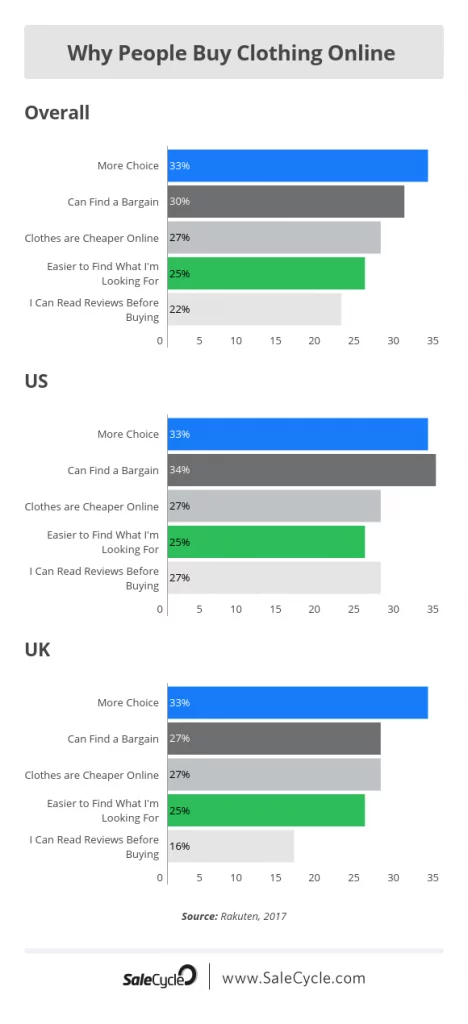
Statistics further emphasize the significance of eCommerce in the fashion sector:
- Global eCommerce Growth: According to eMarketer, global eCommerce sales reached $4.28 trillion in 2020, a figure projected to continue rising steadily in the coming years.
- Fashion’s Share of eCommerce: Statista reports that fashion eCommerce accounted for a substantial portion of online sales, with global revenue exceeding $545 billion in 2020.
Steps to Set Up an Online Clothing Store:
Step 1: Register a Domain Name for Your Online Clothing Store
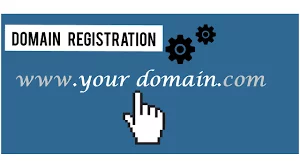
Securing a memorable and fitting domain name is a crucial first step when starting your online clothing store. This domain name serves as the address customers will use to access your store.
Choosing the Right Domain Name:
One approach is to use your brand name as your domain name. Many successful online clothing companies incorporate keywords like “clothing,” “collection,” “wear,” or “shop” into their domain names, as seen with examples like wearpact.com or shopatanna.com.
If you need help to develop a unique domain name, consider using business name generators for inspiration.
Key Characteristics of a Good Domain Name:
- Descriptive: It should offer potential customers a clear idea of your online business and represent your fashion brand effectively.
- Memorable and Concise: Keep it short, ideally one to three words, making it easy for people to remember when they want to visit your online store.
- Easy to Pronounce and Type: Ensure that people can easily share your domain name with others.
Choosing the Right Top-Level Domain (TLD):
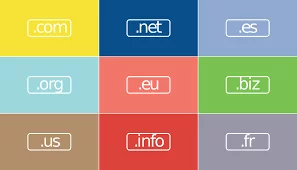
The most commonly used TLD for commercial and personal websites is “.com.” It’s a popular choice because users often instinctively type it into their browsers. Register a .com domain at Hostinger starting from $9.99/year.
If you’re on a budget, consider alternatives like .store and .xyz, which are more cost-effective at $0.99/year.
Checking Domain Availability:
Once you’ve found the perfect domain name and extension, proceed to the checkout to complete your domain registration. This ensures that your online clothing store has a memorable and accessible web address for your customers.
Step 2: Choose the Right Platform for Your Online Clothing Store

The right platform is essential for your online fashion business’s successful launch and growth. There are various options available, each with its advantages and considerations. Here, we’ll explore three popular methods: WooCommerce, a website builder, and an eCommerce platform.
A. WooCommerce:

- Platform Overview: WooCommerce is a plugin designed for WordPress, a widely used content management system for website creation. It lets you turn your WordPress site into a fully functional online store.
- Cost: You’ll need to purchase hosting for your WooCommerce store. Hostinger offers WooCommerce hosting plans starting from $3.99/month, featuring one-click WordPress and WooCommerce installation.
- Key Benefits:
- Easy Setup: WooCommerce simplifies setting up an online store, automatically creating essential site pages upon activation.
- Customizability: You can enhance your store with extensions, from payment acceptance to shipping carrier integration.
- Scalability: As your web traffic grows, you can upgrade your hosting plan for improved performance.
- Budget-Friendly: The core plugin is free, and many extensions are also cost-free, allowing you to focus on hosting expenses.
- Suitable For: WooCommerce is ideal for those seeking a user-friendly and adaptable solution for their online clothing business. Basic hosting knowledge can be helpful for effective site management.
B. eCommerce Website Builder (Nestify Website Builder):
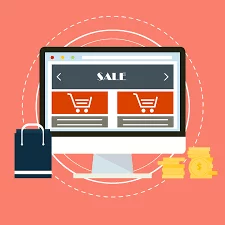
- Platform Overview: Website builders are user-friendly tools that simplify website creation. Hostinger Website Builder, for example, streamlines the process of building websites, including those with online store functionality.
- Cost: After selecting and paying for a web hosting plan, you can use Nestify Website Builder for a hassle-free website creation experience.
- Key Benefits:
- Rapid Onboarding: Choose a template, customize your website, and publish it quickly.
- Designer Templates: Mobile-friendly templates with pre-configured sections for easy customization.
- Beginner-Friendly: Utilize the drag-and-drop interface to place elements on your page as you see fit.
- Marketing Features: Access AI-driven tools for logo creation, business name/slogan generation, and engaging content generation.
- Suitable For: Nestify is an excellent choice for those seeking an easy, fast, and straightforward way to create visually appealing websites, including online stores.
C. eCommerce Platform:

- Platform Overview: eCommerce platforms specialize in online store management, offering extensive features for inventory, order processing, and more.
- Cost: Hosting costs vary depending on whether you choose a hosted eCommerce platform (e.g., Shopify or BigCommerce) or a self-hosted one (e.g., PrestaShop). Nestify offers hosting for PrestaShop starting from $2.99/month.
- Key Benefits:
- Large Product Catalog Support: Sell a vast range of products, potentially including hundreds of thousands of items.
- Complex Product Support: Offer products with variants, configurable elements, and grouping options.
- Advanced Product Search: Allow customers to perform detailed searches using filters to find specific products.
- Multistore Management: Manage multiple storefronts from a single admin dashboard.
- Suitable For: eCommerce platforms are best suited for medium to large-sized businesses that focus primarily on selling products or services, making them ideal for online clothing stores with extensive offerings.
Regardless of the platform you choose, ensure it is user-friendly and can accommodate the growth of your online clothing store as it becomes more successful.
Step 3: Select a Theme and Customize Your Store’s Design

When choosing a theme for your online clothing store, consider the key elements you want to highlight on your website. For example, if you plan to feature a video banner on the homepage, ensure the chosen theme supports this feature.
The design of the theme is equally important. Ideally, it should align closely with your online clothing store’s brand, minimizing the need for extensive modifications. Alternatively, seek themes that offer various styling options, allowing you to customize the appearance.
For WooCommerce users, themes can be found in the respective WordPress or WooCommerce directories. Theme developers often showcase WooCommerce themes on their websites, with popular options like the best-selling Astra theme. Additionally, you can explore themes available on third-party marketplaces such as ThemeForest.
When customizing a template, consider implementing the following design practices to enhance your website’s appeal:
- Visual Hierarchy: Organize web elements by importance to create a clear and practical page layout. Highlight items like image banners for your latest collection at the top to capture immediate attention.
- Whitespace: Incorporate negative space between content to eliminate clutter and provide a better viewing experience. A cluttered design can deter visitors.
- Navigation: Ensure easy access to essential pages through a well-structured menu. Include a search bar at the top to help users quickly find desired products.
- Readability: Use a typographic hierarchy to guide visitors’ eyes toward critical content. Break long paragraphs into manageable chunks for easier scanning.
- Color Selection: Limit your color palette to three colors to avoid overwhelming visitors. Use eye-catching colors for attention-grabbing elements like call-to-action buttons.
- Mobile-Friendliness: Given the prevalence of mobile internet users, ensure your design is responsive and adapts seamlessly to various screen sizes.
For inspiration, you can explore Protest’s website, which demonstrates these design principles. Their simple design incorporates plenty of whitespace, creating an enjoyable browsing experience. The use of color and large images adds to the overall visual appeal.
By carefully selecting a theme and applying these design practices, you can create an appealing and user-friendly online clothing store that resonates with your target audience.
Step 4: Configure Your Online Store Pages
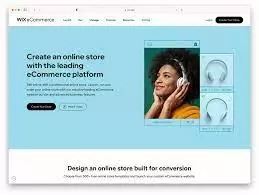
After finalizing the design, it’s time to build your online boutique. Pay close attention to the following key pages when creating your clothing store:
- Homepage: This is the virtual front door to your fashion brand. Use this page to briefly introduce your business and feature a captivating hero product image to excite your target audience.
- About Us Page: Visitors often check the “About Us” page to get better acquainted with your business. Feel free to include your company’s history, vision, and mission statement to establish a connection with potential customers.
- Product Gallery: Showcase all your products on this page. Consider adding filtering and sorting options to help buyers quickly find their desired items within your clothing collection.
- Sizing Information: This page is crucial in assisting customers in determining the right size to purchase. Include detailed measurements and provide images featuring models for reference.
- Shipping Information: Offer comprehensive information about your shipping policies. Cover details such as where you ship, available delivery options, and estimated delivery times. It’s also an excellent practice to feature estimated shipping costs for different locations so customers can anticipate expenses.
- Return and Exchange Policy: Transparency in your return and exchange policy can boost customer confidence. Clearly explain when return or exchange requests are accepted and outline the procedure for initiating such requests.
- Cart Page: The cart page allows buyers to review their order before checkout. Ensure it displays the total estimated costs, providing a clear overview of what customers can expect to pay.
- Legal Pages: Pay attention to essential legal pages, including the privacy policy and terms of service. These pages demonstrate your commitment to complying with legal regulations. Services like Termify can assist in generating these pages efficiently.
Setting up these critical pages gives your online clothing store a solid foundation, offering visitors a seamless and informative shopping experience while ensuring legal compliance and transparency in your business operations.
Step 5: Populate Your Online Store with Products
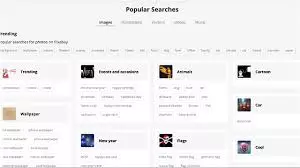
Our next task in establishing your online clothing store is introducing your product offerings. Most eCommerce platforms allow adding items in bulk for efficiency, but reviewing each product is advisable to ensure they are presented excellently individually. When adding products, consider the following elements:
1. Product Images: Since customers rely heavily on the visual presentation of products, high-quality images are essential. You can achieve this with a smartphone camera, but here are ways to enhance your product presentation:
- Invest in proper lighting equipment to ensure well-lit and sharp images.
- Consider hiring a model to bring your products to life and make the images more convincing.
- Use a plain background to make the clothing stand out, allowing viewers to focus solely on the item.
- Capture multiple angles and detailed shots to help customers visualize the product in real life.
- Make subtle color corrections to ensure the product appears as it would in real life, avoiding using filters.
- Implement a zoom function to enable customers to see the product up close.

2. Pricing: The pricing of your products plays a significant role in your online clothing business’s profitability. Consider these common pricing strategies:
- Cost-based: Determine the total cost of production and marketing, adding a profit margin per sale. This approach is beginner-friendly but may only sometimes appeal to shoppers due to potentially higher prices.
- Competition-based: Research your competitors to understand the different price points for similar products, ensuring your pricing remains competitive.
- Value-based: Combine the above strategies while considering your unique competitive advantages, such as brand philosophy, material quality, or unique product features.
Whichever pricing strategy you choose, remember that you can adjust prices in the future as needed.
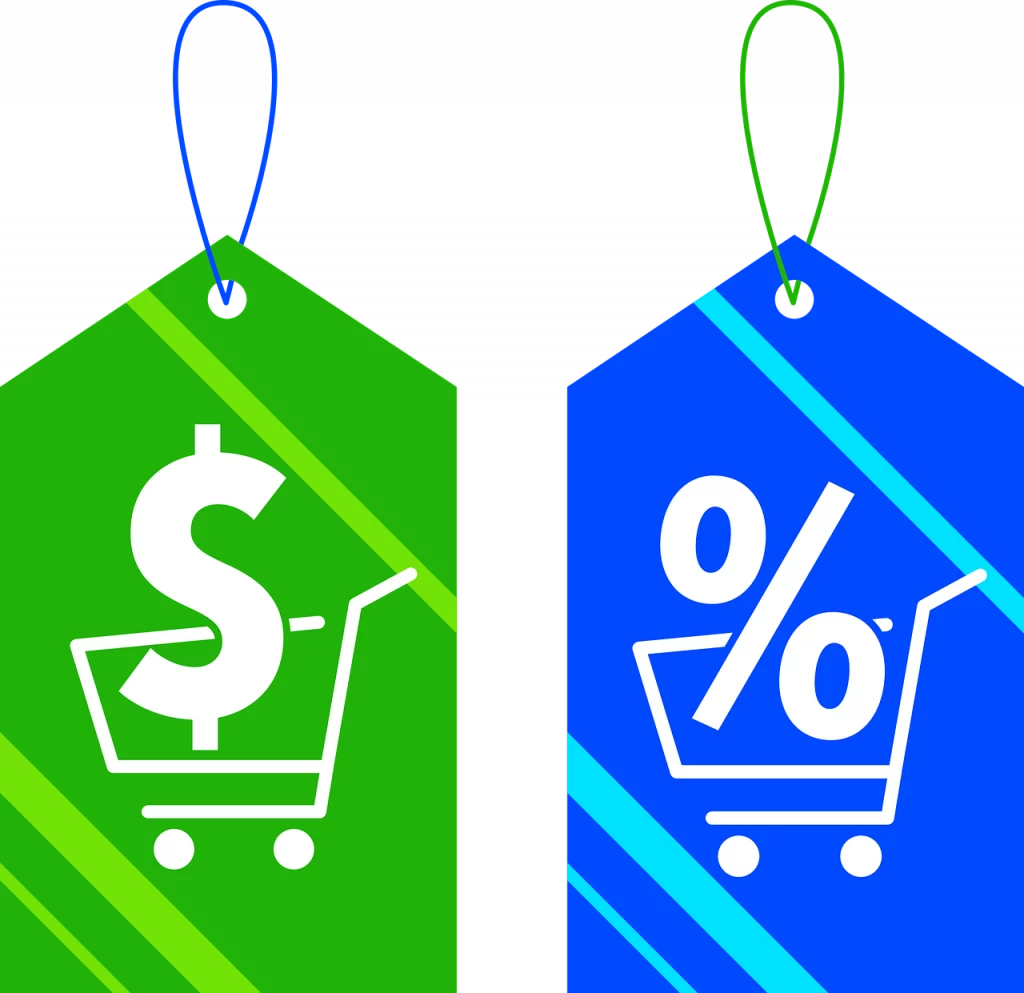
3. Product Description: An appealing and concise product description can significantly influence a customer’s purchasing decision, as reported by eMarketer. Use this Modcloth product description as a reference:
The paragraph describes the item and its features while providing styling ideas without being overly lengthy. Material, fit, and care instructions are presented separately for easy access.
By paying attention to these elements when adding products to your online clothing store, you can enhance the shopping experience for your customers and increase the likelihood of successful sales.
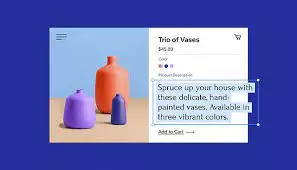
Step 6: Configure Payment Options and Test the Shopping Experience

Before officially launching your online clothing store, it’s crucial to ensure that it operates seamlessly and securely. This step involves setting up a reliable payment system and thoroughly testing the shopping experience to prevent potential issues.
Payment Methods:

To establish a trustworthy online clothing business, you need a secure payment system that processes customer transactions while safeguarding sensitive data from unauthorized access. Here are some widely-used payment methods:
- PayPal
- PayPal supports credit card payments in 25 currencies, with merchant rates varying by transaction type and the business owner’s location.
- Stripe
- Stripe accepts payments in over 135 currencies and offers support for credit cards, digital wallets, and local payment methods. Standard rates include 2.9% plus 30 cents per sale, with additional fees for international payments and currency conversions.
- 2Checkout
- Available in 200 countries, 2Checkout facilitates multilingual checkout. Small businesses can opt for the 2Sell plan, which includes a 3.5% rate plus 35 cents per transaction.
Testing the Shopping Experience:
- Thoroughly examine your online store to identify potential obstacles that may hinder customers from locating products, proceeding to checkout, and completing transactions. These issues could include broken links, slow-loading images, error pages, or a malfunctioning payment gateway.
- Feel free to seek feedback from friends or family members initially. Alternatively, consider utilizing usability testing tools to analyze the website, pinpoint bottlenecks, and address any issues.
- Once you’ve resolved any identified issues and everything appears in order, you’re ready to launch your online clothing business.
By ensuring a secure payment system and conducting thorough testing, you can create a positive customer shopping experience and set a strong foundation for your online clothing store’s success.
Step 7: Promote Your Online Clothing Store

Now that you’ve learned how to start an online clothing store, it’s time to spread the word about your new business. In this section, we’ll primarily focus on promoting your fashion brand through social media, but we’ll also touch on other effective marketing practices.
Establish a Strong Social Media Presence:

- An increasing number of people turn to social media for brand research and to discover trending products. Therefore, building a robust presence on these platforms can help you reach your target audience more effectively.
- Instagram is a popular choice for clothing businesses, with 25% of sponsored posts related to fashion. Pinterest is also effective for style-centric content.
- Tips for launching your fashion brand’s social media presence:
- Use a Business Account: This provides access to valuable features like audience analytics, shoppable posts, and paid advertising.
- Collaborate with Influencers: Consider working with micro-influencers, who are often more affordable and can provide a higher return on investment.
- Run Giveaways: Hosting giveaways can raise brand awareness. For instance, Girlfriend Collective gave away free leggings to those who shared their social media post, resulting in 10,000 orders on their launch day.
- Encourage User-Generated Content: Having customers post pictures of your products can boost your profile’s credibility. Ask followers to use a unique hashtag when sharing their purchases, and consider reposting them on your account.
Other Effective Marketing Strategies:
- Apart from social media marketing, consider these strategies for your online clothing business:
- Email Marketing: Set up an opt-in form to collect email addresses from visitors. Use email announcements to notify subscribers about new collections or sales events. On average, email marketing can generate a $38 return for every $1 invested.
- Blogging: Create a blog to engage readers and improve your search engine ranking. Fashion-related blog posts, such as styling tips and gift guides, can effectively promote your products and help monetize your blog.
- Search Advertising: Paid ads are valuable for helping users find information. Use keywords related to your products and align them with your audience’s search intent to ensure clicks and conversions.
By implementing these marketing strategies, you can successfully promote your online clothing store, increase brand visibility, and effectively connect with your target audience.
Some Extra Tips for Optimizing Online Store:
A. Optimize Website Speed:

Ensuring your online store loads quickly is crucial. Research by Portent reveals that your eCommerce site should load within two seconds for optimal conversion rates. A fast-loading website provides several benefits:
- Increased Conversions: Faster loading times reduce the chances of visitors bouncing to faster websites, leading to improved conversion rates.
- Higher Search Engine Ranking: Google considers loading time a ranking factor for organic and paid search results. A faster website will likely gain better recognition and attract higher traffic levels.
B. Increase Average Order Value (AOV):
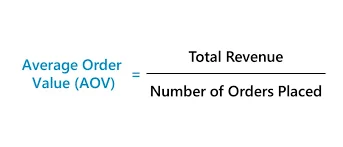
Elevating the Average Order Value (AOV) offers multiple advantages:
- Higher Revenue per Sale: A higher AOV directly translates to more revenue from each customer transaction.
- Enhanced Profitability: Strategies such as offering bundled products or encouraging customers to purchase additional items can boost profits.
- Customer Loyalty: Creating a loyalty program to increase AOV can turn first-time buyers into repeat customers, who typically spend more with each purchase.
C. Reduce Cart Abandonment:

Minimizing cart abandonment is essential for improving your Conversion Rate Optimization (CRO) and comes with several benefits:
- Higher Conversion Rates: Lowering cart abandonment rates means more visitors complete their purchases, increasing conversion rates.
- Improved Customer Experience: Optimizing the checkout process, displaying total estimated costs upfront, and enhancing website security contribute to a smoother and more trustworthy shopping experience.
- Maximized Revenue: Reducing cart abandonment means fewer missed sales opportunities and increased revenue.
D. Leverage Google Analytics:

Utilizing Google Analytics for insights into customer behavior and website performance provides various advantages:
- Data-Driven Decisions: Google Analytics empowers you to make informed decisions based on real-time data, helping you refine your strategies.
- Enhanced Marketing: Understanding traffic sources and customer interactions enables you to effectively refine your marketing efforts and target the right audience.
- Improved Customer Experience: Analyzing conversion rates and user behavior helps identify areas for improvement, leading to an enhanced online shopping experience and increased sales.
By implementing these bonus tips, you can experience these benefits and optimize your online clothing business for growth and long-term success.
Conclusion:
Armed with the right strategies and a profound understanding of your niche, you can establish a thriving online clothing store and leave an indelible mark on the expansive canvas of fashion eCommerce. Embrace change, stay true to your passion, and with dedication, your journey in online fashion retail can be nothing short of extraordinary.
FAQs on Clothing Online Store:
How do I market my online clothing store effectively?
Effective marketing strategies for an online clothing store include:
- Building a solid social media presence.
- Leveraging email marketing.
- Creating valuable blog content.
- Using search advertising.
Optimizing for SEO (Search Engine Optimization) can help your store appear in search results.
What tools can I use to track website performance and customer behavior?
Google Analytics is a powerful free tool that tracks website performance, including traffic sources, page views, and conversion rates. It provides valuable insights into customer behavior and helps you make data-driven decisions to improve your online clothing store.
How can I compete with established fashion brands online?
Competing with established fashion brands requires a unique value proposition, quality products, effective branding, and targeted marketing. Focus on your niche, engage with your audience, and consistently provide exceptional customer service to build a loyal customer base.
What should I do if I experience slow sales in my online clothing store?
Analyze your marketing strategies, product selection, pricing, and customer feedback. Adjust your approach and consider experimenting with different tactics to boost sales.
How do I handle returns and exchanges in my online clothing store?
Communicate your return and exchange policies on your website. Make it easy for customers to initiate returns or exchanges, and provide excellent customer support.
What trends should I be aware of in the online clothing industry?
Stay updated on fashion trends, sustainability initiatives, and emerging technologies in eCommerce. Sustainable and ethical fashion, personalization, and augmented reality (AR) shopping experiences are among the current trends.



